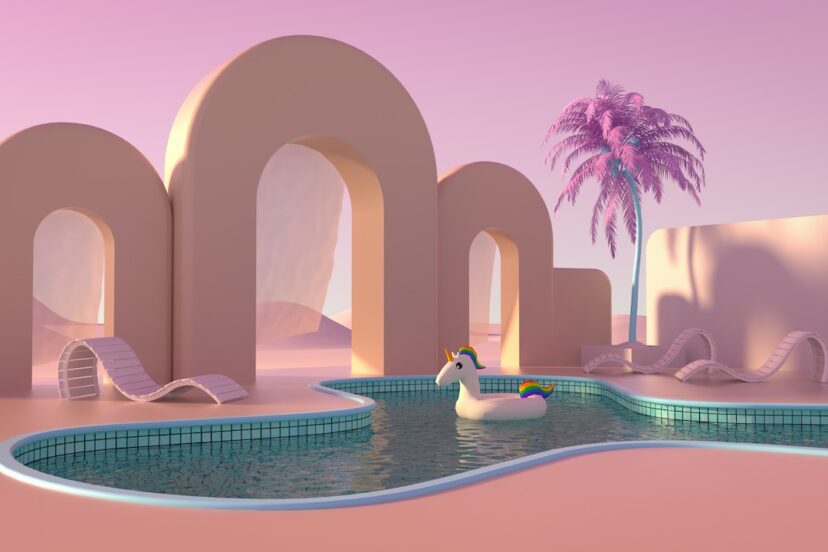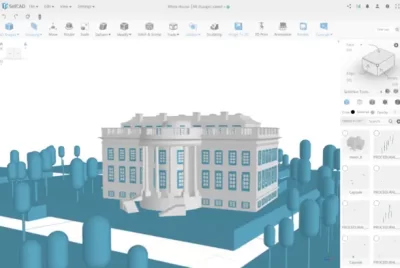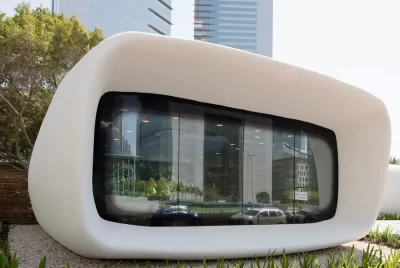How Are Artists Designing 3D Prints Today?
Artists and designers now have considerably greater access to 3D printing. Thanks to a rise in the availability of consumer-grade printers in the early 2010s. Designing 3D prints with this latest three-dimensional technology has opened up a whole new world of possibilities for many artists who have had trouble bringing their ideas to life in the past owing to constraints on materials and production. various in the artistic community have found 3D printing to be especially useful because of the various ways in which it may be adapted to individual needs.
Many artists have switched to it or added it to their practice as a result of its proliferation. The Dutch sculptor Eric van Straaten, for instance, used to work with wax and resin but now uses 3D printing completely. So, how does 3D printing is being used in the field of arts and by artists? Let’s find out.
Designing 3D Prints in Contemporary Art
Experimentation is a major support structure for modern art’s investigation of new ideas. The industry has moved from ‘how to think of designs’ to “how to design 3d prints’ real quick. The advent of 3D printing has opened up a whole new realm of possibility for creative expression. Indeed, this is what many contemporary artists have been doing recently. New York-based artist Jacolby Satterwhite, in an effort to “appropriate” the 19th-century French modernist Édouard Manet, strewn 3D printed resin objects among his neon pieces in his upcoming 2020 work Black Luncheon.
Modern art can also benefit from the unexpected textures made possible by 3D printing. Phoebe Hui’s Selenite (2021) installation at Tai Kwun in Hong Kong features functional 3D printed elements to create a lunar surface effect. She worked with the design firm MetaObjects, who employed a multijet fusion powder printing technique with charcoal black ink to accomplish this.
Digitally Fabricated Sculpture With 3D Printing
It might be said that 3D printed sculptural art is the most fascinating artistic exploration of technology. Due to the possibilities of dimension. Sculptors and artists working in other mediums have been exploring its potential applications in designing 3d prints. Artist Rirkrit Tiravanija utilized 3D printed plastic to make the leaves of a bonsai tree in his mixed media installation Untitled 2013 and again in Untitled 2017.
Using a 3D scan of a Triceratops skeleton, bioartist Amy Karle created a set of six buildings in partnership with The Smithsonian that “imagine new forms based on extinct species, exploring hypothetical evolutions through technological regeneration.” The pioneering 3D printed Lady Dior was created by the renowned French sculptor Marguerite Humeau. Who also frequently employs this cutting-edge technique in her practice.
These sculptures are also being sent into space. Miniature works of art were launched to the ISS from the Moon Gallery in the Netherlands in February 2022.
3D-Printed Artwork For Walls
Many artisans take 3D printing design tips very seriously. 3D printing can also help painters who are short on time and who want to expand their business’s sales volume. By increasing production efficiency. In 3D textured printing, every texture is duplicated so that the final product seems as lifelike as possible to the original painting. This is accomplished by first printing a “heightmap” created by extracting the desired layer from an image. The end product is a near-perfect copy of the source material.
Art Accessibility Through 3D Printing
Although sometimes controversial, 3D art reproductions have many practical applications. Can 3D printing, for instance, be used to reimagine an easier-to-understand art history timeline? In 2015, the Prado Museum in Madrid, Spain collaborated with Estudios Durero, a studio that specializes in 3D printing. To build reproductions of six different iconic masterpieces. Visitors who are blind or have low eyesight were able to generate a mental map of paintings like Velázquez’s Apollo in the Forge of Vulcan and Goya’s The Parasol by listening to recordings that emphasized the brushstrokes.
More than 45 million photographs from Getty photographs were converted into 3D tactile prints with raised surfaces in 2021. Thanks to a collaboration between the company and the National Federation of the Blind and Tactile Images.
Designing 3D Prints in Creative Arts
- Many restrictions on what interior designers can accomplish in practice have been removed because to 3D printing technology. The Valencian design studio Masquespacio used the new 3D printed house designs technology in the design of the Greek restaurant EGEO by recreating columns and integrating LED tubes for a more modern look.
- Reduced time spent on manual labor and improved precision have made 3D printing a game-changer for architectural model manufacturing. However, 3D printing’s potential extends far beyond the realm of architectural models. In 2021, the Italian 3D printing firm WASP built an entire Dior pop-up shop in Dubai out of eco-friendly materials like clay, sand, and rice husks.
- New printing techniques have opened up a world of possibilities for costume and scene designers. Reducing the price of sometimes prohibitively expensive items. Fra Diavolo, a play from the 19th century, was performed in Rome’s Teatro dell’Opera in 2017. Its complete scenography was 3D printed by WASP.
Using 3D Printing to Preserve Art and History
Has 3D printing helped with the preservation of historical artwork? That can be argued back and forth. While 3D printing replicas of cultural artifacts continue to raise concerns about authenticity. They may be preferable to the alternatives of destruction and oblivion in many cases. When a massive fire destroyed more than 90% of the museum’s 20 million items, the Museu Nacional in Rio de Janeiro, Brazil used 3D printing under the project name “Ouroboros” to rebuild the lost artifacts.
The Victoria and Albert Museum (V&A) in London has been active in fostering discussion on important topics related to 3D printing in the arts for quite some time. In 2016, the Biennale di Venezia and the V&A co-hosted the exhibition “A World of Fragile Parts,” which investigated the feasibility of “copying” heritage places and cultural artifacts when they are in risk. As the risk of loss and damage to our worldwide material legacy escalates. The expanding availability of 3D scanning and printing couldn’t be more timely in the context of cultural preservation. As stated by curator Brendan Cormier.
It’s safe to say that designing 3D prints has been booming in the creative arts industry and is expected to do a lot more than this!




